Sandy Wright's Blog, page 14
December 28, 2017
Make Celebration a Part of Life
My holiday season this year is turning out to be the best in the last decade or so.
At first, I couldn’t put my finger on why this one is better, so I sat down and listed what we’ve done, what we didn’t do, and our overall attitude.
Here’s what I discovered that helped make this season joyful:
Time spent with new and old friends
 In previous years, health issues and money prevented both my immediate and extended family from traveling to visit.
In previous years, health issues and money prevented both my immediate and extended family from traveling to visit.
This year, we had the money, so we invited my best friend to fly in from Colorado and stay with us. She can’t afford it; we can. The gift of giving felt great on both sides.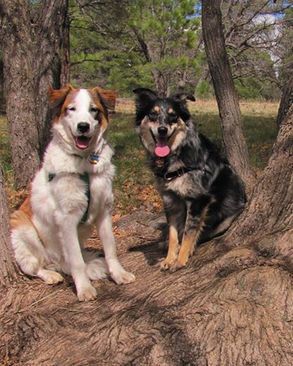 Once she arrived, we began walking all three dogs every day. They are joyously happy about the resumption of our fall ritual.
Once she arrived, we began walking all three dogs every day. They are joyously happy about the resumption of our fall ritual.
We also have been able to include our youngest son and only grandson in our celebrations. That’s always a bonus.
Celebration. We made the time for holiday activities to celebrate the season:
* Writing 25,000 new words during the November NaNoWriMo month of writing. I list this under “celebration” because writing that hard throughout November enabled me to put the book aside for December and get my house ready for holiday guests, normally an extremely stressful activity.
* Hired a woman to clean house for me a few times. She needed money, I needed time. This is an indulgence I don’t normally partake in, but boy, did it help! Thanks, Jordan!
 * A night listening to The Messiah with the Phoenix Symphony and Chorale, something I’ve wanted to do for 25 years.
* A night listening to The Messiah with the Phoenix Symphony and Chorale, something I’ve wanted to do for 25 years.
* Shopping early, over a few months, thus giving myself the time to wrap presents and enjoy the process.
No, I am NOT a happy Dec. 24th prep person. I want time to spend several evenings gazing at the Christmas tree and sparkly packages in the dark, with a steaming cup of spiced cider in hand.
* A wonderful Yule celebration with the Arizona Reclaiming group. This year, I brought my Colorado friend, Lisa, with me. It was her first Wiccan gathering and she got to meet everyone while smudging. Thanks, Lisa!
 *A Yule concert, workshop and joyous shared meals with pagan songstress Wendy Rule and her quirky and dry-witted husband Tim.
*A Yule concert, workshop and joyous shared meals with pagan songstress Wendy Rule and her quirky and dry-witted husband Tim.
* A wonderful Yule celebration with the Arizona Reclaiming group.
This year, I brought my Colorado friend, Lisa, with me. It was her first Wiccan gathering and she got to meet everyone while smudging. Thanks, Lisa!
A night at the Desert Botanical Gardens’ Los Noches de Luminarias, strolling the lit paths and listening to the live performances.
We try to go here every year. The quiet, candle-lit atmosphere relaxes and grounds, and it’s a wonderful part of the season.
 It occurs to me that celebrations are nurturing acts (whether it is nurturing ourselves or others) are the glue that helps hold society together.
It occurs to me that celebrations are nurturing acts (whether it is nurturing ourselves or others) are the glue that helps hold society together.
From the first wild turkey barbequed on a spit in front of a cave, to Thanksgiving dinner pulled out of a fancy, expensive oven, the celebration of eating together is a ritual of sharing.
And whether listening to a full orchestra, pagan songs by a bonfire, carolers under the stars, or Grandma romping up a little two-step after dinner, our voices raised in heavenly chorus is praise of the season, our current fortune, our last successful harvest, and our Goddess.
This is what celebrations are made of. This is what I wanted to find again.
A great loneliness has settled across a great many people in this world. We no longer buy into the old fear-induced religions. The wrathful “gods” have lost their power over us, and we let them rant and rave until we click off our TV sets. But deep inside us there is a space that is painfully empty, as if we had a hollow above our hearts where the old revels used to live, yearning to be filled.
We must be careful about what we feed our spiritual hunger. It can’t be junk food, or hate, or unfocused anger and jealousy.
Instead, let’s first fill the emptiness with boundless courage. The courage to renew our faith in ourselves as children of the natural gods. To acquire courage, we must regain our natural dignity, and vow that only the best of thoughts shall enter the sacred space of our mind. We must affirm our kinship with the vast universe, not just the space around us, and claim the Earth, our beautiful blue planet, as our mother. Then we will have found our natural family once more.
Today we drink to excess or take drugs, but can you imagine using dance, music, fresh air, moonlight, singing and good company to achieve ecstatic happiness? Imagine becoming gods and goddesses behind our masks, encountering people we would not normally meet and sharing with them the joy of the seasons? Imagine taking back the streets, not only for righteous marches, but for revels, for dancing, and for walking together. Imagine the common denominator is the love of nature and the seasons. Imagine that it abolishes class distinctions, and opens the portals of the rich open to revive the poor with welcome. How does that feel?
Celebrate!! The smallest events can be made into great moments in our lives by taking the time to celebrate them. Let the fun begin!!
Blessed Be to you and yours. May you cross into the New Year laughing!
At first, I couldn’t put my finger on why this one is better, so I sat down and listed what we’ve done, what we didn’t do, and our overall attitude.
Here’s what I discovered that helped make this season joyful:
Time spent with new and old friends
 In previous years, health issues and money prevented both my immediate and extended family from traveling to visit.
In previous years, health issues and money prevented both my immediate and extended family from traveling to visit.This year, we had the money, so we invited my best friend to fly in from Colorado and stay with us. She can’t afford it; we can. The gift of giving felt great on both sides.
 Once she arrived, we began walking all three dogs every day. They are joyously happy about the resumption of our fall ritual.
Once she arrived, we began walking all three dogs every day. They are joyously happy about the resumption of our fall ritual.We also have been able to include our youngest son and only grandson in our celebrations. That’s always a bonus.
Celebration. We made the time for holiday activities to celebrate the season:
* Writing 25,000 new words during the November NaNoWriMo month of writing. I list this under “celebration” because writing that hard throughout November enabled me to put the book aside for December and get my house ready for holiday guests, normally an extremely stressful activity.
* Hired a woman to clean house for me a few times. She needed money, I needed time. This is an indulgence I don’t normally partake in, but boy, did it help! Thanks, Jordan!
 * A night listening to The Messiah with the Phoenix Symphony and Chorale, something I’ve wanted to do for 25 years.
* A night listening to The Messiah with the Phoenix Symphony and Chorale, something I’ve wanted to do for 25 years.* Shopping early, over a few months, thus giving myself the time to wrap presents and enjoy the process.
No, I am NOT a happy Dec. 24th prep person. I want time to spend several evenings gazing at the Christmas tree and sparkly packages in the dark, with a steaming cup of spiced cider in hand.
* A wonderful Yule celebration with the Arizona Reclaiming group. This year, I brought my Colorado friend, Lisa, with me. It was her first Wiccan gathering and she got to meet everyone while smudging. Thanks, Lisa!
 *A Yule concert, workshop and joyous shared meals with pagan songstress Wendy Rule and her quirky and dry-witted husband Tim.
*A Yule concert, workshop and joyous shared meals with pagan songstress Wendy Rule and her quirky and dry-witted husband Tim.* A wonderful Yule celebration with the Arizona Reclaiming group.
This year, I brought my Colorado friend, Lisa, with me. It was her first Wiccan gathering and she got to meet everyone while smudging. Thanks, Lisa!
A night at the Desert Botanical Gardens’ Los Noches de Luminarias, strolling the lit paths and listening to the live performances.
We try to go here every year. The quiet, candle-lit atmosphere relaxes and grounds, and it’s a wonderful part of the season.
 It occurs to me that celebrations are nurturing acts (whether it is nurturing ourselves or others) are the glue that helps hold society together.
It occurs to me that celebrations are nurturing acts (whether it is nurturing ourselves or others) are the glue that helps hold society together.From the first wild turkey barbequed on a spit in front of a cave, to Thanksgiving dinner pulled out of a fancy, expensive oven, the celebration of eating together is a ritual of sharing.
And whether listening to a full orchestra, pagan songs by a bonfire, carolers under the stars, or Grandma romping up a little two-step after dinner, our voices raised in heavenly chorus is praise of the season, our current fortune, our last successful harvest, and our Goddess.
This is what celebrations are made of. This is what I wanted to find again.
A great loneliness has settled across a great many people in this world. We no longer buy into the old fear-induced religions. The wrathful “gods” have lost their power over us, and we let them rant and rave until we click off our TV sets. But deep inside us there is a space that is painfully empty, as if we had a hollow above our hearts where the old revels used to live, yearning to be filled.
We must be careful about what we feed our spiritual hunger. It can’t be junk food, or hate, or unfocused anger and jealousy.
Instead, let’s first fill the emptiness with boundless courage. The courage to renew our faith in ourselves as children of the natural gods. To acquire courage, we must regain our natural dignity, and vow that only the best of thoughts shall enter the sacred space of our mind. We must affirm our kinship with the vast universe, not just the space around us, and claim the Earth, our beautiful blue planet, as our mother. Then we will have found our natural family once more.
Today we drink to excess or take drugs, but can you imagine using dance, music, fresh air, moonlight, singing and good company to achieve ecstatic happiness? Imagine becoming gods and goddesses behind our masks, encountering people we would not normally meet and sharing with them the joy of the seasons? Imagine taking back the streets, not only for righteous marches, but for revels, for dancing, and for walking together. Imagine the common denominator is the love of nature and the seasons. Imagine that it abolishes class distinctions, and opens the portals of the rich open to revive the poor with welcome. How does that feel?
Celebrate!! The smallest events can be made into great moments in our lives by taking the time to celebrate them. Let the fun begin!!
Blessed Be to you and yours. May you cross into the New Year laughing!
Published on December 28, 2017 15:33
December 21, 2017
Yule Blessings
Happy Winter Solstice!
Last weekend I had the pleasure of hosting pagan songstress Wendy Rule and her equally talented husband Tim, in town from their new home in Santa Fe, New Mexico.
 They performed a house concert on Saturday night (thank you so much, Thalia, for hosting this year!). Sunday Wendy held a workshop on the Persephone myth and performed songs from her upcoming double album.
They performed a house concert on Saturday night (thank you so much, Thalia, for hosting this year!). Sunday Wendy held a workshop on the Persephone myth and performed songs from her upcoming double album.
I hope you are also blessed with a Yule season filled with music, laughter and good conversation with friends.
 Today I sit in the stillness and contemplate.
Today I sit in the stillness and contemplate.
This is the longest night of the year, the time when the Goddess gives birth to the new spark of hope. Hope for the return of the light to the world, conceived during the rites of Ostara.
The season is for celebrating the rebirth of the sun. The Sun God, who dies at Samhain, is reborn from the Maiden aspect of the Pagan holy trinity: Maiden, Mother and Crone.
On this longest night, the Goddess gives birth to the sun child, when hope for new light is born.
Tonight I am attending a Yule celebration with friends at the Irish Cultural Center. This will be my first time for this event, and we are all excited to participate in the meditation and ritual.
I hope you, too, will have an opportunity this week to contemplate the stillness of the longest days.
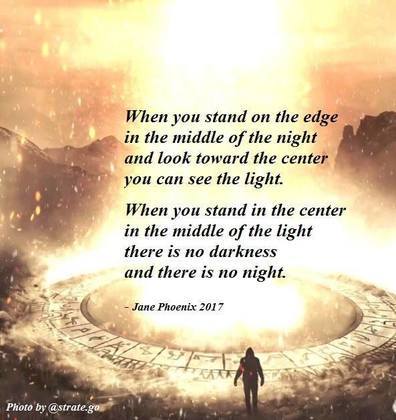 To round out my Yule time celebrations, an old and dear friend is coming to stay at our home for a week.
To round out my Yule time celebrations, an old and dear friend is coming to stay at our home for a week.
She's not Wiccan or pagan, but she has agreed to accompany me to my Reclaiming group’s gathering on Saturday. She doesn’t know it yet (hi Lisa!), but we volunteered to smudge the group.
That’s an easy introduction to ritual, right?
Our Reclaiming theme this year is, "Find Your Light in the Dark of Night," based on the beautiful poem above by one of our members.
Happy winter solstice all. May the flame of compassion fill your hearts.
May the fire of hope burn bright in your soul.
Last weekend I had the pleasure of hosting pagan songstress Wendy Rule and her equally talented husband Tim, in town from their new home in Santa Fe, New Mexico.
 They performed a house concert on Saturday night (thank you so much, Thalia, for hosting this year!). Sunday Wendy held a workshop on the Persephone myth and performed songs from her upcoming double album.
They performed a house concert on Saturday night (thank you so much, Thalia, for hosting this year!). Sunday Wendy held a workshop on the Persephone myth and performed songs from her upcoming double album.
I hope you are also blessed with a Yule season filled with music, laughter and good conversation with friends.
 Today I sit in the stillness and contemplate.
Today I sit in the stillness and contemplate.This is the longest night of the year, the time when the Goddess gives birth to the new spark of hope. Hope for the return of the light to the world, conceived during the rites of Ostara.
The season is for celebrating the rebirth of the sun. The Sun God, who dies at Samhain, is reborn from the Maiden aspect of the Pagan holy trinity: Maiden, Mother and Crone.
On this longest night, the Goddess gives birth to the sun child, when hope for new light is born.
Tonight I am attending a Yule celebration with friends at the Irish Cultural Center. This will be my first time for this event, and we are all excited to participate in the meditation and ritual.
I hope you, too, will have an opportunity this week to contemplate the stillness of the longest days.
 To round out my Yule time celebrations, an old and dear friend is coming to stay at our home for a week.
To round out my Yule time celebrations, an old and dear friend is coming to stay at our home for a week. She's not Wiccan or pagan, but she has agreed to accompany me to my Reclaiming group’s gathering on Saturday. She doesn’t know it yet (hi Lisa!), but we volunteered to smudge the group.
That’s an easy introduction to ritual, right?
Our Reclaiming theme this year is, "Find Your Light in the Dark of Night," based on the beautiful poem above by one of our members.
Happy winter solstice all. May the flame of compassion fill your hearts.
May the fire of hope burn bright in your soul.
Published on December 21, 2017 11:15
December 16, 2017
Holiday Card Release Spellwork
 Every so often, I conduct a special practice to clear out my psyche, atone for the past, and make a new beginning.
Every so often, I conduct a special practice to clear out my psyche, atone for the past, and make a new beginning.This doesn’t mean feeling guilty; just the opposite. It’s more about making room for new things to happen. Nature, who cannot stand empty space, fills the void you make with something new.
So this Yule, as I send out my Winter Solstice greeting cards, I’m including some people with whom I am not on good terms. Those cards say, “Hey, let’s forget our bad times. Blessings to you.”
I’m not sending these cards to ask for forgiveness, I’m sending them to release the negative feelings I’ve been carrying around, to make space in my heart for good, not negativity.
Do you still think about someone who has snubbed you, hurt your feelings or otherwise done you wrong? Try this method, release your negativity, and, if you do, let me know how it feels.
To make sure the message won’t be understood and make things worse instead of better, rub lavender buds on the card and include some in the envelope.
Hoping your holiday preparations are bringing you joy…and your New Year is peaceful.
Published on December 16, 2017 12:13
December 11, 2017
Weird Christmas
I’m in kind of a funk this holiday season. Not depressed, more like cynical. Maybe it’s POTUS and his deranged antics, but nothing seems pure and sacred this holiday season.
Rather than fight it, I’ve decided to go with the feeling, so here is a collection of weird Yuletide traditions. There’s a lot more than this, of course, but these are the top ones that caught my eye.
#1 - Iceland Hag Gryla
 My husband was stationed in Iceland, so it’s been a site of interest in our family for decades. But if you travel to Iceland in December, don’t expect the jolly red-clad figure of Santa Claus.
My husband was stationed in Iceland, so it’s been a site of interest in our family for decades. But if you travel to Iceland in December, don’t expect the jolly red-clad figure of Santa Claus.Instead, you may encounter a menacing, witch-like figure named Gryla. She is a giant troll hag with hooves for feet and thirteen tails.
She is said to live in a cave hidden deep in the mountains, where she always keeps her cauldron boiling due to her insatiable hunger…for children. Each Christmas, she comes down from her mountain dwelling to hunt for bad children. She throws them in her sack and drags them back to her cave where she boils them alive for her favorite stew.
Gryla’s wrath is not reserved solely for bad children. She has been through three husbands already, two of which she killed because they bored her.
And, because those who shouldn’t reproduce always do, Gryla has thirteen children, all boys, who are described below.
#2 – The 13 Yule Lads
Icelandic children place a shoe in their bedroom window each evening in the 13 days before Christmas.
 Every night one Yuletide lad visits, leaving sweets and small gifts or rotting potatoes, depending on how that particular child behaved the previous day.
Every night one Yuletide lad visits, leaving sweets and small gifts or rotting potatoes, depending on how that particular child behaved the previous day.Each Yule Lad has an idiosyncrasy of behavior, much like the Disney version of Snow White’s seven dwarfs. This is Spoon-Licker, who comes to visit on December 15.
Unlike their mother, they’re not really dangerous, just mischievous pranksters and petty criminals. Gryla’s pet cat, on the other hand, is a truly nasty creature.
#3 – The Christmas Cat
 Old Icelandic folklore states that every Icelander must receive a new piece of clothing for Christmas, or they will find themselves in mortal danger. An enormous black cat prowls Iceland on Christmas Eve and eats anyone who doesn’t follow this simple rule.
Old Icelandic folklore states that every Icelander must receive a new piece of clothing for Christmas, or they will find themselves in mortal danger. An enormous black cat prowls Iceland on Christmas Eve and eats anyone who doesn’t follow this simple rule.
The threat of being eaten by the Yule Cat was used by farmers as an incentive for their workers to finish processing the autumn wool before Christmas. The ones who took part in the work would be rewarded with new clothes, but those who did not would get nothing and thus would be preyed upon by the monstrous cat.
#4 - Candy Cane Anyone?
Candy canes are a classic tree decoration, but as a stocking stuffers they’re so boring – unless you shake things up. Luckily, Amazon has a whole slew of questionable flavors.
 Here are some holiday deviants to try:
Here are some holiday deviants to try:Bacon, for those fanatics out there. You know who you are.
Maybe wasabi, for those who like their holiday spicy.
Or gravy? Eww.
Coffee? If you mixed it with cinnamon I might try it.
And, of course, pickle. Nom nom. They look festive enough for even the most traditional tree, and boy, would your relative’s kids be surprised. #5 - The Pickle Ornament
We actually have one of these ornaments and search the tree for it every Christmas.
 Well, the family searches. Since I decorate the tree, I’m ineligible. But that also means that I get to hide it in the deep inner recesses of the branches and make it reeealy hard to find.
Well, the family searches. Since I decorate the tree, I’m ineligible. But that also means that I get to hide it in the deep inner recesses of the branches and make it reeealy hard to find.The first child who finds the pickle on Christmas morning gets a special gift and good luck all year.
Supposedly, the legend originated in Germany. The trouble with the legend is that people in Germany were unfamiliar with it. Glass tree ornaments are indeed made in Germany, but this particular glass pickle ornament actually became popular in America when F.W. Woolworth began importing them in the 1880s.
#6 - The Caganer
Every nativity scene should have one of these figures, at least if you live in Spain, Italy or Southern France. In those areas, the nativity is often a large model of the city of Bethlehem, and encompassing the entire city rather than just the manger.
The pastoral scene may include a farmhouse, with the child in a manger, and outlying scenes like a washerwoman by a river, a woman spinning, shepherds herding their sheep, and the Three Wise Men approaching on camels, a scene with the angel and shepherds, the star pointing the way, etc.
And tucked away in a corner, far from Mary and Joseph, is the Caganer.
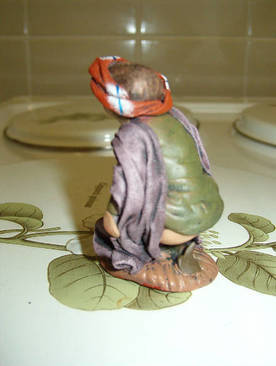 He needs privacy, because he is defecating.
He needs privacy, because he is defecating.The name “El Caganer” literally means “the crapper.” Traditionally, the figurine is depicted as a peasant, wearing the traditional Catalan red cap and with his trousers down, showing a bare backside, and a pile of, well, crap, on the ground below his butt.
Why? It seems the figurine is a symbol of fertility and good fortune for the land.
Of course, you can now buy Caganers in the image of Shakespeare, Michael Jackson, the POTUS, even the Pope. Why didn’t I know this at my last white elephant holiday party?
I hope you’ve enjoyed this trip down bizarre Christmas lane. Maybe you’ve even picked up a few last-minute Christmas gift ideas!
HAPPY HOLIDAYS TO YOU AND YOURS.
Published on December 11, 2017 20:56
December 1, 2017
NaNo Ends but Writing Goes On
 National Novel Writing Month 2017 is over. I ended with 35,000 words for the month, and just under 50k written on Crescent Moon Crossing. I am working my way consistently toward the last, and final, crisis in the story. All that it’s the nitty gritty of the detective work, putting all the pieces together to reveal the killer.
National Novel Writing Month 2017 is over. I ended with 35,000 words for the month, and just under 50k written on Crescent Moon Crossing. I am working my way consistently toward the last, and final, crisis in the story. All that it’s the nitty gritty of the detective work, putting all the pieces together to reveal the killer. Meet Abby Merrick
With that in mind, I’d like to introduce you this week to Abigail (Abby) Merrick, the victim in the book. She was born and raised in Southern California, and she looks and sometimes acts the part of a SoCal girl.
When her husband Jace is transferred to Fort Huachuca Army base for his Intelligence training, she insists on moving also. Jace is confined to the Fort for 17 weeks, so Abby moves in with Rumor Vargas, her roommate from college, who has a working ranch in nearby Bisbee.
 Abby has pressing reasons to stay close to Jace: he’s having a long-time affair with an Army officer who conveniently was also just transferred to Fort Huachuca.
Abby has pressing reasons to stay close to Jace: he’s having a long-time affair with an Army officer who conveniently was also just transferred to Fort Huachuca.Abby’s wealthy parents were both killed two years ago, and she received a large inheritance, so she is financially independent.
At Rumor’s urging, Abby begins to work as a volunteer at Hope House, an organization that provides water and provisions at stash sites for illegals crossing the Mexican border into the United States.
Abby is shot and killed While working at the stash site, which is situated in a remote area known for both human and drug smuggling by Mexico’s notorious Sinaloan Cartel.
Did she inadvertently surprise some drug mules on their delivery route into Tucson or Phoenix? Did her husband carry out his plan to get rid of her?
Or did someone else want Abby dead? Border Crossing in the Arizona desert: Gateway to dreams or graveyard?
Hundreds of thousands of immigrants like the ones depicted in my book have tried to cross illegally into the United States over the past several years, even as the government threatens to build a wall and step up investments in manpower and technology to secure the nation's borders.
For those who make it across the border, it isn't an easy journey. Thousands of would-be immigrants have died in the desert of southern Arizona in the past 10 years, according to the Pima County Medical Examiner's Office. Most of them die after suffering dehydration in the summer or fall to hypothermia in the winter.
"People are still driven by economic necessity to come to the United States by whatever means they can. Some come to join family members already here, others because they are hungry," said Isabel Garcia, a public defender and a co-chair of the Tucson, Arizona-based Coalition for Human Rights.
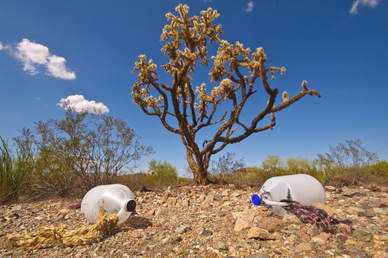 "But the fact is that very few are prepared for such a hard trip. Many have to survive days and days in the desert," she said, "and they can never carry enough water."
"But the fact is that very few are prepared for such a hard trip. Many have to survive days and days in the desert," she said, "and they can never carry enough water."The trek can often last days, as smugglers take them through remote paths in order to avoid detection by the Border Patrol. Wild animals roam the area at night and the people the migrants paid to get them safely across often turn on them, robbing them of their money and abusing the women before abandoning them, according to authorities.
Just like Naco, the border town I feature in Crescent Moon Crossing, most Mexican border towns, have a Grupo Beta office; it’s the Mexican federal agency that helps those newly deported from the United States and other migrants find food, shelter or a way home. “Don’t put yourself or your family in danger,” blares a poster on one wall. “Putting your children in the hands of coyotes or polleros is like abandoning them in the desert,” warns another.
 It’s easy to spot the deportees. They’re the ones without belts or shoelaces. Border Patrol agents remove those from the people they detain to deter suicide attempts, and they don’t generally give them back.
It’s easy to spot the deportees. They’re the ones without belts or shoelaces. Border Patrol agents remove those from the people they detain to deter suicide attempts, and they don’t generally give them back.Take Santiago Rivera Diaz, who sits with two other youths, waiting for a ride to a shelter, like Hope House in my story, where he’ll be fed and given a cot for the night. His left arm is in a sling, his left leg heavily bandaged. His wispy beard makes him look younger than his 20 years.
Rivera, who’s from Oaxaca, says he crossed the border two weeks earlier, north of the town of Altar, with two other men and four young women. Their guide collected $500 from each of them. Then he ditched them in the desert. After three days without food or water, they were nearing a major highway (Rivera couldn’t name it, but his description matches I-19), when they were confronted by a group of five armed men — what the Border Patrol calls a “rip” crew — robbers who target drug smugglers and migrants.
“Two of the girls ran away,” says Rivera in a low voice. “We tried to stop them, but they beat us until we played dead. We were hurt, but we made our way to the highway and La Migra came up. They held us three days. Then they brought me here two days ago.”
He says he has no idea what happened to any of the others he was with. Reyes had hoped to find work so he could send money home to his family, who grows corn. But now he’s headed back to Oaxaca.
"Many fall into the abuses of the smugglers, sexual abuse," said Manuel Padilla, head of the Border Patrol's Tucson sector. "The only thing that matters to them is money, not people."
Padilla said Border Patrol agents often spot and rescue immigrants stranded in the desert, which is an important part of the agency's job. However, the agency also focuses on prevention, by educating would-be immigrants of the dangers involved in trying to cross the border illegally.
They ask foreign diplomats at consulates in the United States to spread the word in their countries about the dangers of illegal border crossings, and they try to get the word out in Spanish-language media, Padilla said.
Some make it past the desert and go on to find jobs in the United States. But on the Mexican side of the border, deportations from the United States have become so common that shelters and businesses have opened up, catering to people who've gotten kicked out of the United States.
Others come back bruised, robbed by smugglers or worse, says Hilda Irene Loureiro, a Mexican merchant who runs a shelter.
 There are more than 800 unidentified bodies inside the morgue in Pima County, Arizona. Investigators believe many of them are immigrants who died in the desert. Authorities hope DNA testing can help desperate families find missing loved ones who died on the trek into the United States.
There are more than 800 unidentified bodies inside the morgue in Pima County, Arizona. Investigators believe many of them are immigrants who died in the desert. Authorities hope DNA testing can help desperate families find missing loved ones who died on the trek into the United States.According to the Pima County Medical Examiner's Office, in 2012 the bodies of 157 migrants were recovered in the desert. In 2013, the remains of 169 people were found there.
"Since 2001 we've had around 2,200 immigrant deaths," most of them Mexican citizens, said Gregory Hess, the Pima County medical examiner. "When we find only a bone in the desert, a femur ... or an arm, it's not here for long... we take photographs and measurements and DNA" samples.
Unclaimed bodies and bones are buried or cremated after about a year, he said.
Searching for clues
Since a majority of the bodies belong to Mexican citizens, morgue staff are in regular contact with the Mexican Consulate in Tucson.
It isn't the job Jeronimo Garcia thought he was signing up for when he joined the Mexican Foreign Service. But now he's become so used to handling human remains that he no longer feels the need to wear a surgical mask to protect himself from the stench of death.
The consulate employee has become a go-to person for American authorities when it comes to finding clues about the immigrants' identities.
Garcia has earned the trust of U.S. officials because of his track record over the past 12 years, helping to identify dozens of bodies.
"(This one) has dental work. Sometimes teeth give us clues as to where they come from," Garcia said as he examined cadavers and bones at the Pima County morgue. "Central Americans, particularly Guatemalans, often have ornamental work done. They put copper stars on their teeth."
Migrants sometimes sew documents into their underclothes, or conceal strips of paper with the telephone number of a contact in the United States or their country of origin, he says. This information can be a solid clue to track down identity.
After the extensive search at the morgue, the bodies are labeled and stored in a freezer. Personal effects and identifications are also stored, as any clue could lead to the identification of a cadaver.
Sometimes, there aren't many clues. If all that Garcia and the medical examiner's office have to go on is a set of dry bones, DNA testing is the only viable option.
The Mexican Consulate sometimes pays for the tests when Mexican citizens are involved.
For immigrants from other countries, the medical examiner's office relies on its growing ties with the New York-based Argentine Forensic Anthropology Team.
The organization, which started out trying to identify remains of dissidents killed during Argentina's brutal military dictatorship, now has also collected more than 1,700 DNA samples from families in Mexico, El Salvador, Honduras, Costa Rica and Guatemala in efforts to help find missing migrants. So far, they've identified 65 bodies.
"This is never a happy ending. ... We just try to reduce the time that families have to prolong their pain," said Mercedes Doretti, who directs the organization. "What it means is ending the uncertainty of the family not knowing what happened to their relative, the suffering that everyone goes through."
At the Checkpoints: A Million Pounds of Pot
At the Yuma port of entry, a line of traffic going north, most with Sonora plates, backs up at the Sentri lane for “trusted travelers” who’ve passed a security check. Customs officers are searching an SUV. They soon find tightly wrapped bundles of heroin in the wheel wells, and take the young, well-dressed woman into custody.
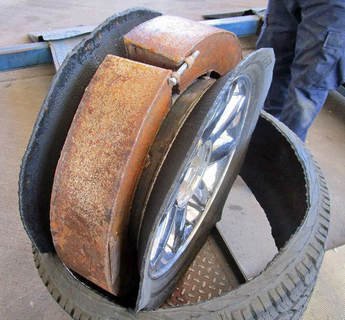 Even as the number of migrants detained annually in Arizona has dropped by 70 percent over the past five years, drug seizures have climbed.
Even as the number of migrants detained annually in Arizona has dropped by 70 percent over the past five years, drug seizures have climbed.
Legal ports of entry are where most heroin, cocaine and methamphetamine seizures are made, Border Patrol officers say. In one week in mid-March, officers made five seizures at Arizona ports of entry totaling 148 pounds of cocaine, 90 pounds of meth, and 9 pounds of heroin.
But, by volume, marijuana dwarfs everything else. One day last spring, Nogales border officers seized a 1-ton shipment of pot in a tractor-trailer of bell peppers; the next day, they arrested another tractor-trailer driver with 6,219 pounds of marijuana in boxes labeled as vacuum pumps and lamp holders.
The Tucson sector is the main marijuana corridor from Mexico, accounting for 44 percent of all Border Patrol marijuana seizures across the entire Southwest border last fiscal year. Border Patrol agents in the Tucson sector seized more than 1 million pounds of pot.
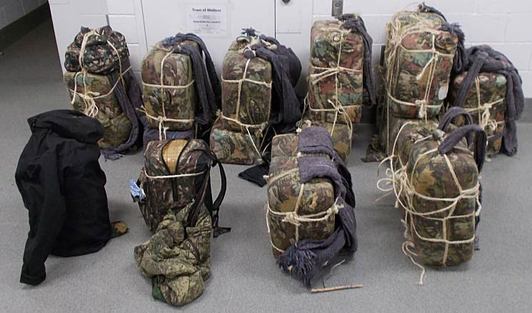 Most commonly, that marijuana is hauled across in remote areas by teams of backpackers, agents say. Tracking them remains a challenge. The drones (10 of which have cost $240 million to buy and operate to date) are useful, agents say, but they are sensitive to high winds and the Border Patrol hasn’t yet trained enough controllers to fly them. Last fiscal year, each drone averaged just over an hour and a half in the air a day.
Most commonly, that marijuana is hauled across in remote areas by teams of backpackers, agents say. Tracking them remains a challenge. The drones (10 of which have cost $240 million to buy and operate to date) are useful, agents say, but they are sensitive to high winds and the Border Patrol hasn’t yet trained enough controllers to fly them. Last fiscal year, each drone averaged just over an hour and a half in the air a day.Nor has border security dented traffic in guns headed south. Over the past five years, CBP (Customs Border Patrol) officers have seized, on average, fewer than 2,000 weapons a year presumably headed to the criminal groups sending the drugs north. That represents less than 1 percent of the estimated 252,000 weapons that are bought in the United States and smuggled south each year, according to a recent economic study by the University of San Diego’s Transborder Institute and the Igarapé Institute, based in Brazil.
“This is an issue that has been studiously ignored by the media,” said Topher MacDougal, one of the authors of the study. He calls for strong background checks, banning cash purchases of guns along the border and tougher criminal penalties for “straw” buyers — people with clean records who buy guns on behalf of those who wouldn’t pass background checks.
I hope you have enjoyed my blogs on the characters and topics in Crescent Moon Crossing during NaNovember. Please consider signing up as a Beta Reader.
As always, thank you for your support!
See you next week with the first of my blogs on Yule.
Published on December 01, 2017 11:21
November 23, 2017
NaNo: Clawing My Way to 30k
 This week kicked my butt. I’m still moving forward, but it seems like getting to 30k is taking FOREVER.
This week kicked my butt. I’m still moving forward, but it seems like getting to 30k is taking FOREVER.If this was a cycling race, I’d be the one attempting the break-away from the back of the pack, trying to catch that large peloton of riders behind the leaders.
35,000 words this month is kind of my benchmark. It won’t make me a winner in NaNo, but that’s how many I need to personally feel like a winner. That would put my novel-in-progress at a little over 60,000—and within striking distance for a finished draft by year-end.
Fellow NaNo’ers: If you’re stuck in the back of the pack but still fighting, I’m with you and I feel your pain! If you’re cruising your way to the finish line, hurray! And if you pulled to the side of the race course and quit? Get back on that writing bike and pedal through NaNovember and on into December. Because writers don’t quit!
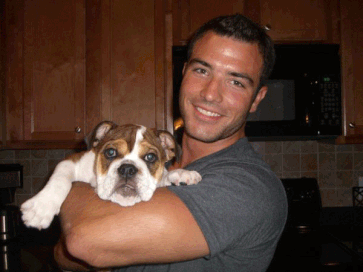 Today, meet Rumor’s half-brother, Alberto Vargas, 32. He has lived in Mexico all his life. His father and uncle work in a factory in Agua Prieta and he lives with them.
Today, meet Rumor’s half-brother, Alberto Vargas, 32. He has lived in Mexico all his life. His father and uncle work in a factory in Agua Prieta and he lives with them.Alberto worked as a coyote, smuggling illegals across the Mexican border into the United States.
Rumor has known for years that her brother made his living smuggling, but she also suspects he has ties to the Sinaloan Cartel. It’s true. Alberto injured a Cartel member in a bar fight a few years ago, and the man later died.
To protect his father and repay his debt, Alberto switched from smuggling human cargo to smuggling drugs. He is now in over his head, and desperately wants out from under the Cartel, but he’s worried they will hard his father and uncle if he refuses to work for them.
In the book, we learn a lot about human smuggling into the United States from Mexico and Central America. Here’s an excerpt:
 Naco, Mexico
Naco, MexicoAlberto Vargas sat among the group of border hoppers gathering in the shade on the Mexican side of fence, wondering which of them would be the first to die.
A dusty thermometer on the cantina wall read 103 degrees.
Pathetic. When he was little, the demarcation between los Estados Unidos and Mexico had been a simple stone marker by the side of the road and a single sentry who waved you through from his seat in the shade. But since 9/11 everything had changed. Now, more than ever, Mexicans had to sneak across the border under cover of darkness, across the most rugged and least populated areas. The coyote smugglers met them on the other side, well past the "taco checks" and the border patrol rifles, to hide them in stash houses in Tucson or Phoenix.
A man with his wife and toddler rested on pads under a flatbed truck, waiting out the afternoon heat. The man stretched out and smoked. The little girl babbled a counting song and played with the fingers of his free hand.
"How far did your man tell you to walk?" Alberto asked the father in Spanish.
"Hasta media noche," the father replied. "We follow the railroad tracks to the big Highway 10. El pollero said he would meet us on the other side of the road at midnight."
Polleros. Chicken herders. Alberto shook his head. The smugglers always told first-timers they would meet them on the other side. Forty miles on the other side. That part was left out.
"You don't want to do this," Alberto said to the father. "Your family will suffer."
The man's face split into a smile. "It will be worth it when I am rich."
"At least buy more water," Alberto pressed. "Two gallons each."
The father pulled his pockets inside out and shrugged. No spare pesos for more than the gallon apiece his pollero had given him.
Of course he didn't. He and the other border crossers had each paid a partial fee to the coyote up-front, and the rest of the negotiated amount was held by a "respondent" and paid when the crosser was delivered safely to Tucson, or Phoenix, LA or El Paso, wherever had been agreed upon.
When Alberto had been a coyote, he made this run two or three times a year, and even he couldn't survive on a single gallon of water. But it wasn't his job to take care of this naïve father and his young family.
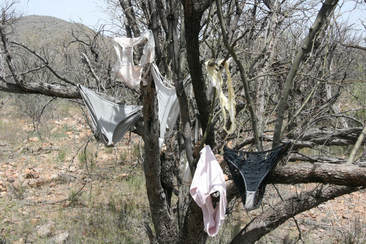 Later, the group encounters what is known as a “Cherry Tree” or a “Rape Tree”.
Later, the group encounters what is known as a “Cherry Tree” or a “Rape Tree”.Often these trees are strewn with women’s garments as a warning to stay out of a certain Cartel’s traffic territory. These trees are seen on major smuggling routes in National Forest, on private land, and many other places just inside Mexico before the border.
A coyote will make $3,000 to $4,000 a head on Mexican illegals, and $10,000 for a Central American fare. He will bring a few to a dozen people per trip, and may make a trip a month or more.
But the rape tree warnings are more likely made by Cartel members marking their drug smuggling routes. That’s where the big business comes in.
An official estimated that cartels send a stunning $64 billion worth of drugs into the U.S. every year.
Mexico’s former Public Safety Secretary Genaro Garcia Luna dropped that number at a recent conference in Juarez.
Would a border wall stem that drug flow? I don’t know.
But I do believe that illegal immigrants will continue to come into the United States from all of the countries to our south unless something is done to ease the extreme poverty in those nations. I don’t think a wall will stop the people.
I know many of you would like for me to put this suspense novel to bed, and get back to writing on the Ancient Magic series book two. While I think you’ll love Crescent Moon Crossing and these characters, I’m also looking forward to writing the second paranormal book, and use all those beautiful Scotland locations we scouted during our trip this summer.
So cheer me across the NaNo finish line on November 30.
Here’s to a new book release in January. AND the start of a whole new novel in February!
Until then, good reading!
#amwriting
#NaNoWriMo
Published on November 23, 2017 16:40
November 17, 2017
NaNo-Writing Sociopaths
 Week Three of NaNo is the hardest for a lot of participants. Everyone is trying to get ready for Thanksgiving dinner and guests.
Week Three of NaNo is the hardest for a lot of participants. Everyone is trying to get ready for Thanksgiving dinner and guests.Plus, a lot of books tend to get bogged down as they head into the middle scenes, somewhere around 40-45k. People who are “on target” should have just passed the 30k mark, so we’ll see how many run into the Week Three doldrums.
I’m not bogged down, I’m just a v-e-r-y slow writer I passed 15k today on my NaNo word count.
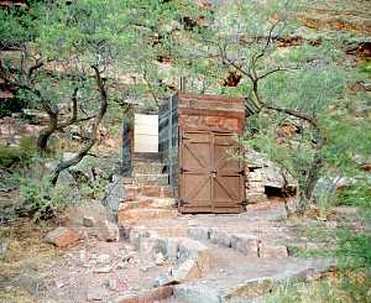 I had a fantastic week plotting to have my bad guy murder two women camping in the Cochise Stronghold Campground near Tombstone.
I had a fantastic week plotting to have my bad guy murder two women camping in the Cochise Stronghold Campground near Tombstone.The first woman I patterned after someone I dislike. (There are so many perks to being a novelist!)
She was so bossy, my bad guy decided to kill her first. He slit her throat when she visited the latrine before bed and then stuffed her in the self-composting toilet.
My husband suggested strangling the second girl and stuffing her in the “bear box” at their campsite, but I wasn’t sure she’d fit without cutting her up. Those boxes are kinda small, and I didn’t want my killer to have the deal with that mess. So I countered with rubbing her body with the morning breakfast’s bacon grease, and leaving her out as a treat for the bears.
Ultimately, I decided the whole “two young women camping alone” scene was cliché, and scrapped all 2,000-plus words. But, damn! It was fun to write. I’m keeping the scene…who knows, maybe you’ll read it someday as a short story.
 While we’re on the subject of bad guys, this week I’d like to introduce you to our first suspect, the victim’s husband, Army Staff Sergeant Jace Merrick.
While we’re on the subject of bad guys, this week I’d like to introduce you to our first suspect, the victim’s husband, Army Staff Sergeant Jace Merrick. It remains to be seen whether Jace is pure evil, but he is definitely a narcissist and a sociopath with no conscience.
He enlisted in the Army during college, after losing is scholarship (it was his professor’s fault, of course), and was infantry, 11-Bravo. He’s a smart guy and has done well.
Now his military career is taking a satisfying leap forward with his transfer to Ft. Huachuca, AZ, for counter-intelligence training.
That is, until his wife, Abby, threatens to report his long-running affair to his commanding officer. Unfortunately, his lover is a female officer, also at the Fort. If he doesn’t break off the fraternization, they could both be court-marshalled. He’s not going to let Abby use his affair against him. In fact, he begins to plot how to get rid of her and make it look like a Cartel human smuggling operation gone wrong.
In researching sociopaths, one of the things I found interesting is that they see nothing at all wrong with their way of living in the world. Every decision a sociopath makes is based on “how does it affect me.” They are noted for their shallowness of emotion, and the hollow and transient nature of any affectionate feeling they may claim to have carries a certain breathtaking callousness
.
They have no trace of empathy and no genuine interest in bonding emotionally with a mate. Once the surface charm is scraped off (and often there is a thick overlying layer of charm—sociopaths are very good at their game), their marriages are loveless, one-sided, and almost always short-term.
As the book evolves, Jace will refuse to acknowledge any blame or even responsibility for the decisions he makes, or for the outcomes of his decisions. The American Psychiatric Association actually has a term for this, “consistent irresponsibility,” and it’s a cornerstone of the antisocial personality diagnosis.
I thought it would be difficult to write a sociopathic personality, but, as it turns out, I am dealing with one in my real life right now, so it was easy to find examples to pattern the behavior.
There’s a good chance you may have a conscienceless sociopath in your life as well. According to the book, The Sociopath Next Door by Martha Stout, PhD, sociopaths make up about four percent of the population.
Often they are attractive, intelligent and extremely successful. But because they truly have no conscience, self-awareness is impossible, and the rest of us just shake our heads and mutter,”Whaat? How can you possibly think that…act like that…do that to someone?”
If you have a close relationship with a sociopath, with a person who truly has no conscience, all my research says not to put out the effort to try and change him or her. Instead, walk away—and take your loved ones with you.
In the end, just as the sociopath has no genuine relationships with other people, he has only a very tenuous one with himself.
Stop by next weekend and meet another suspect, Rumor’s brother Alberto. He’s a Cartel coyote and drug smuggler, but much more of a good/bad mix than Jace. I think you’ll like him, and he’ll teach us a lot about the dangers of smuggling people and contraband across the Mexican border into the States.
Until then, good reading.
Published on November 17, 2017 14:52
November 10, 2017
#AmWriting
 NaNo week 2 has begun, and I passed the 10k word benchmark yesterday. I should be at 15k but gotta say, 10,000 words in eight days is really good for me!
NaNo week 2 has begun, and I passed the 10k word benchmark yesterday. I should be at 15k but gotta say, 10,000 words in eight days is really good for me!I'm nearing the half-way mark in the novel, and Rumor has been shot and is in the hospital. Coop has come to the realization that he's falling in love with her, and he has vowed to find the attacker. The investigation just got more personal!
There's more on Coop below. It took a while, but now I think I like Coop as well or better than I liked Nicholas in my first book. He's not nearly as cranky, but he's just as inept at expressing his feelings! Meet Sheriff Cooper (‘Coop”) Jones, age 36. He is a widower and has a young daughter, Sadie (you will also meet her in the book). His wife was killed by a junkie in a home invasion while Coop was with the Miami police force.
 Yes, i know the uniform and the background is all wrong, but this man is what I want for how Coop looks. This photo was of a British soldier, killed in action, who will remain unidentified. After he buried his wife, Coop wanted to get as far away from Miami as possible.
Yes, i know the uniform and the background is all wrong, but this man is what I want for how Coop looks. This photo was of a British soldier, killed in action, who will remain unidentified. After he buried his wife, Coop wanted to get as far away from Miami as possible. He is now the acting Sheriff of Cochise County, AZ, through a circuitous set of events. The police chief he worked under in Florida met Maricopa County Sheriff Joe Arpio at a national conference, and his boss recommended Coop for a job in Arizona if anything came open.
When the Sheriff of Cochise County was killed in a traffic accident, Coop got the call.
He had only been in Arizona a few months when he has to investigate the murder of a woman, Abby Merrick, in a remote stretch of desert outside Sierra Vista.
She may have stumbled on some Mexican Cartel members smuggling drugs or human cargo across the border. He initially suspects a young Hispanic man who has Cartel ties, and also happens to be the younger brother of Rumor Vargas, a well-respected antiques dealer and business owner in nearby Bisbee.
On the other hand, Abby’s husband has a pretty strong motive to kill his wife as well. He’s in the middle of a long-term affair with a lanky blond Lieutenant with a highly connected daddy.
But the more Coop digs into Abby’s death, the more things don’t quite add up for either of these suspects.
Rumor insists that her brother is innocent. Coop has a lot of respect for her, and his instincts say she is right.
Then someone attacks Rumor, and Coop is desperate to find the perpetrator and keep her safe. He believes his wife would still be alive if he’d paid attention to his instincts then. He’s not about to make the same mistake again.
Coop is fast becoming a favorite character of mine. When I first started writing him, I put the Sheriff’s personality characteristics through the Myer Briggs personality tests (as part of a writing class I was taking). He came back as an INTJ, an interesting character type.
To outsiders, INTJs may see to project an aura of “definiteness” and self-confidence. Sometimes mistaken for arrogance by the less decisive, it is actually a very specific rather than a general nature. Its source lies is the specialized knowledge systems that INTJs start building at an early age. When it comes to their own areas of expertise—and INTJs can have several—they will be able to tell you almost immediately whether or not they can help you, and if so, how. INTJs know what they know, and perhaps still more importantly, they know what they don’t know.
Whatever they happen to be working on is for them the equivalent of amoral cause, and both perfectionism and disregard for authority may come into play.
These personality traits should make an interesting sheriff, don’t you think? If you’ve ever watched the series Western crime suspense Longmire on A&E, you’ve already met an INTJ lawman, and he’s a doozy of an example.
 Longmire features Sheriff Walt Longmire (Aussie actor Robert Taylor), who grapples with a hazy past, complicated moral decisions, and the bad guys of modern northwestern Wyoming.
Longmire features Sheriff Walt Longmire (Aussie actor Robert Taylor), who grapples with a hazy past, complicated moral decisions, and the bad guys of modern northwestern Wyoming. Walt Longmire is the charismatic, dedicated and unflappable sheriff of Absaroka County, Wyoming. Like Cooper Jones, Sheriff Longmire is also recently widowed. Both characters ae men in psychic repair. And bury their pain behind a brave face and dry wit. And both men have a deep understanding and respect for their environment and its indigenous people.
I hope you will come to like Sheriff Coop Jones as much as I’ve enjoyed getting to know him. Look for him in my upcoming book, Crescent Moon Crossing, scheduled for release in early 2018.
And come back to visit here next weekend when you will meet our first suspect, Staff Sgt. Jace Merrick.
Until then, good reading!
Published on November 10, 2017 16:00
November 2, 2017
NaNoNovember
 I can’t even tell you how excited I am for the 2017 National Novel Writing Month (NaNoWriMo). I’m going to use the push that the contest provides to finish my novel-in-progress, Crescent Moon Crossing.
I can’t even tell you how excited I am for the 2017 National Novel Writing Month (NaNoWriMo). I’m going to use the push that the contest provides to finish my novel-in-progress, Crescent Moon Crossing.Yea, I know, you’re supposed to start a new novel for each NaNo, but this is a contest for US, the writers, and this book has been languishing below 30k words all year. It’s time to light the fire and get it finished.
Because I’ll be writing 2,000-plus words a day to make that happen, my blogs will be shorter this month. But I will give you weekly updates on my progress, a synopsis of the book, and some fun character profiles and insights.
My book synopsis and the first character profile, protagonist Rumor Vargas, is below.
Please stop by here and cheer me on! Or, if you participate in NaNo, friend me there (writing under the name SINAZ) and I will follow and encourage you as well.
Crescent Moon Crossing – Synopsis

Staff Sgt. Jace Merrick's two short-term goals: Join the Army Counter-Intelligence Unit, and kill his wife.
When his bleeding-heart spouse, Abby, begins volunteering at Hope House, a group that leaves supplies in the Arizona desert for illegals crossing the border, he hatches a plan to make her murder look like a coyote smuggling gone wrong.
Rumor Vargas is first on the witness list of Deputy Sheriff Cooper "Coop" Jones, assigned to investigate her friend's murder. Rumor finds his quick mind and wicked wit attractive and she's curious about his battle-weary eyes. But when he turns that inquiring mind on her little brother as a prime suspect, Rumor finds she has a reason besides attraction to keep Coop close.
The Sheriff suspects Alberto Vargas has Cartel ties, and this certainly look like the notorious Mexican gang's work. On the other hand, Abby's husband—and his lover--have their own motives for murder.
The further Coop digs into the case, the less the facts add up for any of his known suspects.
Someone has a grudge against Jace Merrick. A life and death grudge. And it's time for payback.
Meet Rumor Vargas - Protagonist
 If you read my first book, Song of the Ancients, you will remember Rumor Vargas as Samantha Danroe’s business partner at their antique clothing store in Sedona, AZ.
If you read my first book, Song of the Ancients, you will remember Rumor Vargas as Samantha Danroe’s business partner at their antique clothing store in Sedona, AZ.Since Samantha took off for London at the end of that book, with no intention of returning to Arizona, they sold off the store and Rumor moved south to Bisbee, another quirky Arizona town near the Mexico border.
Now, in Crescent Moon Crossing, Rumor has again demonstrated her entrepreneurial acumen by opening an antiques store in Bisbee, specializing in folk art, occult pieces and yes, vintage clothing.
She has also earned her private pilot license and travels during the summer, acquiring antiques from around the world. If you’ve ever been to Bisbee, by the way, you know how well this eclectic store would fit in in real life!
Rumor, now 33, is American but has her Mexican father's olive skin, dark hair and eyebrows. She is bi-lingual and often volunteers at a local refugee shelter called Hope House. By the end of the book, she also decides to advocate in court for illegals fighting to stay in the United States.
Her half-brother, Alberto, is a coyote—a human trafficker for a Mexican cartel.
Rumor's friend Abby has been murdered, and Rumor is a partial witness. She wants to help authorities find the murderer, and also clear her brother, who is a suspect.
Drop by here each Friday in November to meet more characters from Crescent Moon Crossing, as well as interesting insider fact nuggets dug up in my research that will never make it into the book.
#Amwriting
#NaNoWriMo
Published on November 02, 2017 23:39
October 26, 2017
Fire in the Earth
 Strombili volcano in Italy. Photograph by Martin Reitzel/Gazelian The hubs and I watched a PBS Nova special this week that intrigued me—and got me started on enthusiastic research for Book 3 in my Ancient Magic series.
Strombili volcano in Italy. Photograph by Martin Reitzel/Gazelian The hubs and I watched a PBS Nova special this week that intrigued me—and got me started on enthusiastic research for Book 3 in my Ancient Magic series.The mystery began when archaeologists found a hastily dug mass grave of 4,000 people in London.
So what killed all these people?
At first they assume it’s a plague pit from the Black Death. But when they date the bones, the remains turn out of be one hundred years too old.
The chronicles of that time describe a run of wild weather that devastated crops and spread famine across Europe.
As part of their research, scientists took ice core samples from the North Pole and looked at the section from the same time period, 1285. That year showed a huge spike in sulfuric acid residue in the core sample. Then they took an ice sample from the South Pole and found the same results.
Based on these findings, the Nova research team began to look for the signature of a volcanic eruption big enough to have blasted a huge cloud of ash and sulfuric acid into the atmosphere which chilled the entire planet. From Greenland to Antarctica, the team found telltale “fingerprints” in ice and soil layers until, finally, they narrow down the culprit to a smoldering caldera, a “blown out” volcano, on a remote Indonesian island.
Nearly 750 years ago, this volcano’s colossal explosion shot a million tons of rock and ash every second into the atmosphere. Across the globe, it turned summer into winter. Yes, you read that right. ACROSS THE GLOBE! Turns out, volcanic eruptions along the equator will swirl that debris both north and south through the atmosphere.
So first came the obvious question of, “Could it happen again?” Then my novelist radar went off, screaming, “There is such a paranormal story here!”
I already know that the third book in my series involves the volcano Goddess Pele. I envisioned it taking place in Hawaii, but, based on my current research, Mexico, Italy and Central America are also possibilities.
 P0p0cateptl, near Mexico City, has erupted 20 times since 1519, most recently in 2000. Nearly nine million people live nearby.
P0p0cateptl, near Mexico City, has erupted 20 times since 1519, most recently in 2000. Nearly nine million people live nearby.
 Vesuvius in Italy has a history of eruptions every twenty years. This is the volcano that buried Pompeii. And it's overdue--the last major eruption was 1944.
Vesuvius in Italy has a history of eruptions every twenty years. This is the volcano that buried Pompeii. And it's overdue--the last major eruption was 1944.
 Galeras is in Columbia near the Ecuador border. A 1993 eruption killed nine people, including scientists who had descended into the volcano's crater to take measurements to predict future eruptions.
Galeras is in Columbia near the Ecuador border. A 1993 eruption killed nine people, including scientists who had descended into the volcano's crater to take measurements to predict future eruptions.  Kilauea in Hawaii erupts every three years or so. It is one of five shield volcanoes that collectively form the Big Island of Hawaii. With NaNoWriMo (National Novel Writing Month) starting in a week, I may just find myself working on three novels! I’ll give you the details in next week’s post, and so please drop by here again.
Kilauea in Hawaii erupts every three years or so. It is one of five shield volcanoes that collectively form the Big Island of Hawaii. With NaNoWriMo (National Novel Writing Month) starting in a week, I may just find myself working on three novels! I’ll give you the details in next week’s post, and so please drop by here again.I plan to post book details and updates, character descriptions and pictures of how I imagine them, as well as “behind the scene” factoids about each book on this blog throughout November and early December.
Have a blessed Samhain and a scary but safe Halloween. See you next weekend!
Published on October 26, 2017 22:41



